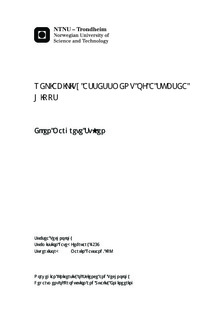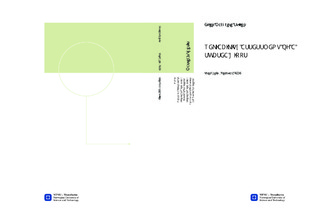| dc.contributor.advisor | Rausand, Marvin | nb_NO |
| dc.contributor.author | Stølen, Ellen Margrete | nb_NO |
| dc.date.accessioned | 2014-12-19T12:21:16Z | |
| dc.date.available | 2014-12-19T12:21:16Z | |
| dc.date.created | 2014-04-23 | nb_NO |
| dc.date.issued | 2014 | nb_NO |
| dc.identifier | 713700 | nb_NO |
| dc.identifier | ntnudaim:10474 | nb_NO |
| dc.identifier.uri | http://hdl.handle.net/11250/240965 | |
| dc.description.abstract | Safety instrumented systems are vital in the oil and gas industry. A SIS consists of input elements, a logic solver and final elements. A High Integrity Pressure Protection System is an example of such a system. HIPPS is installed to protect a platform from too high pressure by shutting off the source before exceeding the design pressure. The IEC 61508 and IEC 61511 are used in the oil and gas industry during all phases of a SIS lifecycle. As a measure of SIS reliability, both standards use safety integrity level. The standards lists several requirements for both hardware and software. Compliance to the SIL must be demonstrated by quantitative assessments including estimations to the SIS reliability. Several models for reliability assessments are demonstrated in IEC 61508.A HIPPS is installed to perform a safety instrumented function (SIF) that is operated in low-demand mode and its availability must be quantified by using the average probability of failure on demand, PFDavg. Some methods used to determine the reliability of a SIS are Reliability Block Diagrams, approximation formulas and Markov modeling.Proof testing a HIPPS is an expensive process due to downtime and availability of the system. It is therefore suggested to perform partial stroke testing (PST) on these systems. PST is performed while the operation is online, so there is no need to stop the production. This type of testing will reveal some of the dangerous failures on a system at a lower test interval than a full function test of the system. | nb_NO |
| dc.language | eng | nb_NO |
| dc.publisher | Institutt for produksjons- og kvalitetsteknikk | nb_NO |
| dc.title | RELIABILITY ASSESSMENT OF A SUBSEA HIPPS | nb_NO |
| dc.type | Master thesis | nb_NO |
| dc.source.pagenumber | 47 | nb_NO |
| dc.contributor.department | Norges teknisk-naturvitenskapelige universitet, Fakultet for ingeniørvitenskap og teknologi, Institutt for produksjons- og kvalitetsteknikk | nb_NO |

